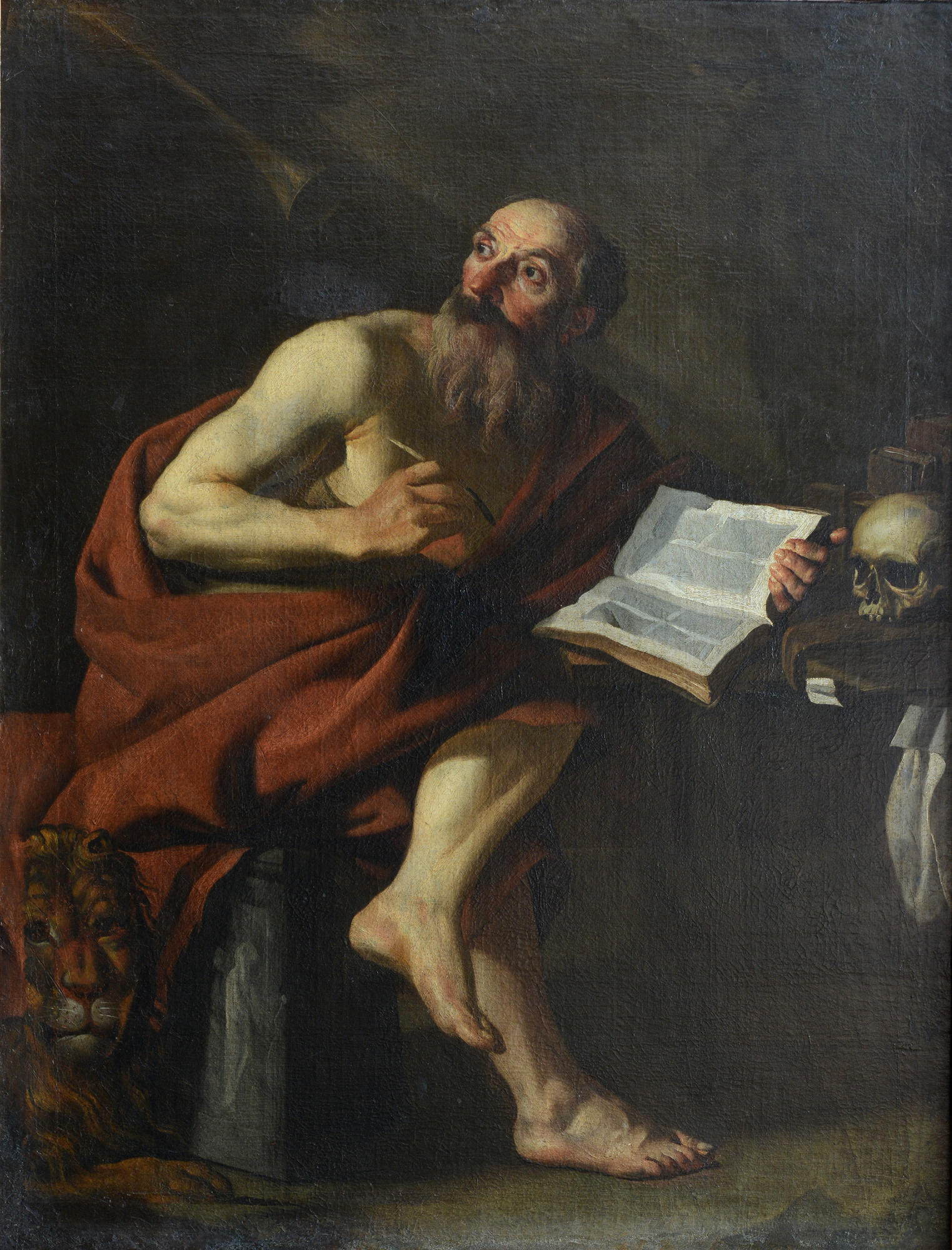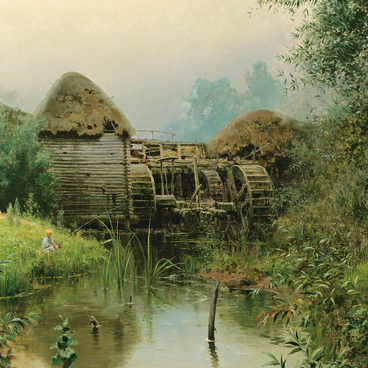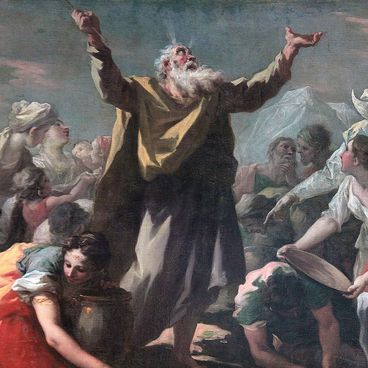In 1612–1621 Flemish painter Jan Janssens was travelling around Italy where he was introduced to the works of Michelangelo Caravaggio and his followers from Utrecht – Dirck van Baburen, Gerrit van Honthorst and Hendrick Terbrugghen.
The works of these painters with their compositional expressiveness, contrast lighting and desire for realistic depiction of nature had a strong influence on Janssen’s style.
Upon return to his home country, the painter entered the Guild of Saint Luke in Gent where he rose from the position of a free master to the Guild’s dean.
The central theme of Jansen’s paintings were biblical and rarely mythological stories. The master often depicted scenes from the life of Jesus. He also painted several versions of the Christ’s resurrection. The original can be seen in the Holy Savior Cathedral in Brugge. On that painting the artist managed to show his originality and independence from other Caravaggesque painters.
The works of Janssens were made in accordance with the rules of Counter-Reformation – a religious and political movement in Europe in mid-16-17th centuries. Its main objective was to restore the positions and prestige of the Roman Catholic Church.
Ruthless and sober realism as well as dramatic effects with hidden lights shining on the figures are intended to cause strong emotional effect on the viewers.
The depicted Saint Jerome was an early Christian theologian. He was born in the 40s of the 4th century in Stridon. In his youth he made pilgrimage to Palestine, after that he lived as a hermit in the Chalcidian desert for four years where he was translating the complete text of the Bible. On his painting Janssens united various stages of his life.
Most likely, the main subject of the painting is an event, which occurred with the hermit – a prophetic vision of the Judgment of God. It was a sign for the hermit to stop reading books of pagan authors. Since then Jerome started reading Divine books with great diligence.
The main artistic attributes of Saint Jerome of Stridon were a lion whom according to the legend he tamed by taking out a thorn from its paw, a scull – symbol of abdication from the world and a Bible. Jan Janssens painted him in red Cardinal colours, however Jerome was only a Pope’s councilor. The College of Cardinal of the Roman church was established much later.
The attribution of the painting was presented in 1959 by Irina Lynnik from the State Hermitage. At the moment, this is the only authenticated work of Jan Janssens in Russian museums.
The works of these painters with their compositional expressiveness, contrast lighting and desire for realistic depiction of nature had a strong influence on Janssen’s style.
Upon return to his home country, the painter entered the Guild of Saint Luke in Gent where he rose from the position of a free master to the Guild’s dean.
The central theme of Jansen’s paintings were biblical and rarely mythological stories. The master often depicted scenes from the life of Jesus. He also painted several versions of the Christ’s resurrection. The original can be seen in the Holy Savior Cathedral in Brugge. On that painting the artist managed to show his originality and independence from other Caravaggesque painters.
The works of Janssens were made in accordance with the rules of Counter-Reformation – a religious and political movement in Europe in mid-16-17th centuries. Its main objective was to restore the positions and prestige of the Roman Catholic Church.
Ruthless and sober realism as well as dramatic effects with hidden lights shining on the figures are intended to cause strong emotional effect on the viewers.
The depicted Saint Jerome was an early Christian theologian. He was born in the 40s of the 4th century in Stridon. In his youth he made pilgrimage to Palestine, after that he lived as a hermit in the Chalcidian desert for four years where he was translating the complete text of the Bible. On his painting Janssens united various stages of his life.
Most likely, the main subject of the painting is an event, which occurred with the hermit – a prophetic vision of the Judgment of God. It was a sign for the hermit to stop reading books of pagan authors. Since then Jerome started reading Divine books with great diligence.
The main artistic attributes of Saint Jerome of Stridon were a lion whom according to the legend he tamed by taking out a thorn from its paw, a scull – symbol of abdication from the world and a Bible. Jan Janssens painted him in red Cardinal colours, however Jerome was only a Pope’s councilor. The College of Cardinal of the Roman church was established much later.
The attribution of the painting was presented in 1959 by Irina Lynnik from the State Hermitage. At the moment, this is the only authenticated work of Jan Janssens in Russian museums.




